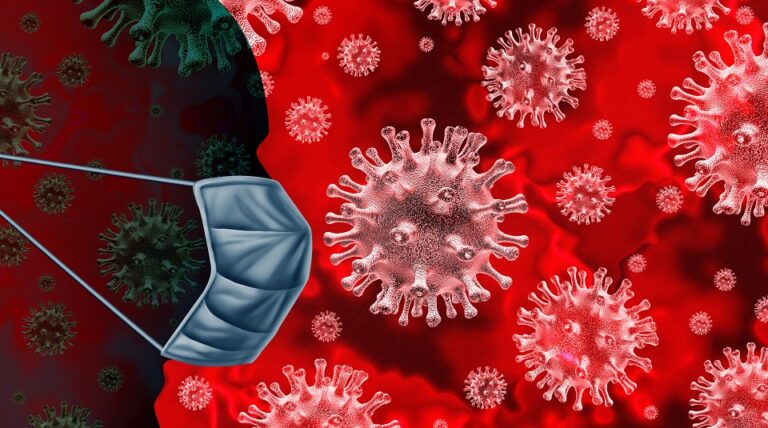
Before you head under the knife or pop that pill, check our doctor-approved list to make sure it’s really necessary for you.
Epidural steroid injections
Modern medicine isn’t perfect, and sometimes doctors prescribe medical interventions out of habit even though new evidence shows they’re not effective, too dangerous, or don’t always work. One of these is epidural steroid injections for back pain.
Although these shots may work short-term, they have risky potential complications like neurological problems or paralysis. “Generally, epidural steroid injection isn’t very useful for treatment of chronic back or neck pain,” says Steven Severyn, MD, an anesthesiologist at the Ohio State University Wexner Medical Center.
In addition, research has shown the injections haven’t reduced the number of back surgeries. If the pain is caused by nerve issues (sciatica) instead of arthritis, “it will often relieve nerve inflammation causing the limb pain and allow time for naturally occurring improvement to take place,” Dr. Severyn says.
However, the injections’ usefulness is still only short-term. Other treatments for back pain, such as physical therapy, can be a better plan for long-term improvement.
Back surgery
Unfortunately, surgery for back pain isn’t always a good option either. For some conditions, says Dr. Severyn, it can be helpful: spinal instability; loss of limb, bowel, or bladder motor functions; spinal infection; and other severe issues.
But, back surgery shouldn’t be an option for chronic lower back pain, he says. And even when surgery is indicated, surgeons are using unnecessarily complicated procedures, suggests a study from Sweden.
In the random trial, patients with spinal stenosis got either a simple procedure called decompression which relieved pressure on the nerves, or they underwent decompression with spinal fusion, in which adjacent vertebrae are screwed together to give the spine more stability.
The study found that the outcomes in both patients were the same, but the spinal fusion patients had a greater risk of bleeding. Before rushing to surgery, Dr. Severyn says, “find a physician who has experience, a broad comprehensive perspective, and a lot of treatment resources.” And unless it’s an emergency, get a second opinion before saying yes to back surgery.
CT scans
If a doctor says you need a CT scan, ask questions before rushing to radiology. Studies have shown that radiation from CT scans could be responsible for as many as two percent of all cancers in the U.S.
The procedure, whose use has increased ten percent per year since 1980 according to the National Cancer Institute, contains as much radiation as 200 X-rays. The FDA notes that between 10 and 30 percent of pediatrics CT scans, and up to 50 percent of all imaging tests, are unnecessary.
Although they don’t always look for the same thing, could the much safer MRI be a better choice when appropriate? “CT scans are much quicker and tend to be less costly than an MRI, but does have the added radiation that MRI’s lack,” says Todd Sontag, DO, a family medicine physician with Orlando Health.
“Ultimately, what’s ordered should be based on what will give the provider the most information on what pathology they suspect. Many times, the question is, does any imaging even need to be ordered?”
Breast reconstruction
Reconstruction after a mastectomy is a wonderful option for some women, but a small recent study indicates that many don’t fully understand it before they go ahead with it—leading the researchers to suspect over-treatment.
“We found that only 43 percent of patients had treatment that was consistent with their preferences and had adequate knowledge [about the procedure], which we found concerning,” says study author Clara Lee, MD, a breast reconstruction surgeon at The Ohio State University Comprehensive Cancer Center—Arthur G. James Cancer Hospital and Richard J. Solove Research Institute.
“I think this means that patients and doctors aren’t making ideal decisions about breast reconstruction.” Patients need to be fully informed about the risks, the recovery time, and the number of procedures before they can make an accurate decision about reconstruction, she says.
Circumcision
In years past, it was common practice for a pediatrician to snip off the foreskin of male babies’ penises—but recently, parents are questioning whether the practice is done more out of tradition than anything else.
Because of this, “there is no wide-spread recommendation for universal circumcision,” Dr. Sontag says. Although certain benefits, such as the prevention of urinary tract infections, sexually transmitted infections, and penile cancer, have been proven, the risks are relatively low.
“To put this in perspective of how effective it is at prevention, about 200 circumcisions are needed to be performed to prevent one hospitalized infant due to a urinary infection; and to prevent one case of penile cancer, approximately 300,000 circumcisions need to be performed,” Dr. Sontag says.
On the other hand, babies may experience some pain and bleeding during the surgery, but major complications, including infection and surgical error, are also rare. As the topic continues to be hotly debated among the medical community, just remember it isn’t a necessary procedure, but a personal choice.
“There are enough benefits to warrant the circumcision for some [parents], and not enough benefits to warrant the circumcision for others,” Dr. Sontag says.
Amniocentesis
Although amnios aren’t routinely given to pregnant women anymore, you still may be offered one if blood tests or ultrasounds show worrying results. “Amniocentesis is still the only way to know 100 percent the information on the baby’s chromosomes and to detect smaller gene changes that may lead to disease,” says Clara Ward, MD, a maternal-fetal medicine specialist at McGovern Medical School at UTHealth and Children’s Memorial Hermann Hospital.
In the procedure, a needle is inserted into the amniotic sac and fluid is withdrawn to test for genetic issues. Although reports of miscarriage rates vary, the American Pregnancy Association puts it at one in 400. “While amniocentesis may be safer than you think, it is not a necessary procedure,” Dr. Ward says.
There are other, less invasive tests that help avoid amnios today, she says, so it’s important to remember that you can refuse the procedure if it’s offered to you.
Antibiotics
When you get a cold, the first thing you want to do is head to the doctor for antibiotics—but that is likely a mistake. “Most patients that are prescribed antibiotics typically don’t even need them,” says Dr. Sontag.
The reason is that most colds, sinus, and upper respiratory infections are caused by viruses, and antibiotics only works against bacteria. “About 95 percent of sinus infections are viral—therefore only about one in 20 will typically need an antibiotic,” Dr. Sontag says.
The CDC estimates a third of antibiotics aren’t necessary for all causes. Doctors end up giving patients what they ask for in order to keep them satisfied, and then when the cold clears up in a few days people think the meds worked—when in reality the cold simply ran its course.
And overprescribing these drugs is having major consequences. “Because antibiotics have been so widely used unnecessarily, now we are faced with bacteria that have become resistant to many antibiotics,” Dr. Sontag says.
“As resistance builds, we are faced with less and less options to treat infections when they genuinely need antibiotics.” In addition, unnecessary antibiotics can wipe out the good bacteria in your gut, causing a serious infection called clostridium difficile colitis, or C-Diff.
Stents
In emergency situations, putting in a stent to open up a person’s clogged artery can save their life. But they may be overused preventatively, says the American Medical Association. Their report estimates the procedure to place the stent, called an angioplasty, is inappropriate in one in 10 cases.
“It can be hard to believe if you find a severely blocked artery in a patient’s heart that the patient is better off with the artery remaining blocked,” says Quinn Capers, IV, MD, a specialist in cardiovascular medicine at The Ohio State University Wexner Medical Center.
“Studies show that, in stable coronary artery disease in patients without strong evidence that the blockage is slowing blood flow to the heart, medication can be just as effective.” This research has found that stents aren’t effective at preventing future heart attacks and death in stable patients, because where the stent is placed might not be the spot that causes the problem down the line.
Plus, the surgery carries risks. But, Dr. Capers notes that stents do provide patients with relief of daily chest pain, and if used, should be part of a broad treatment plan that also includes medications, exercise, healthy diet, and reduced stress levels.

























